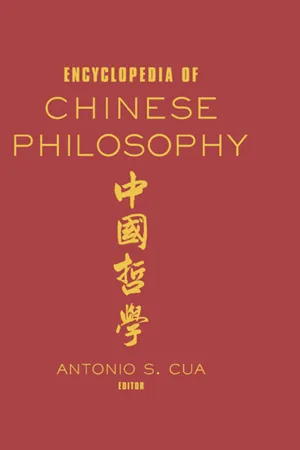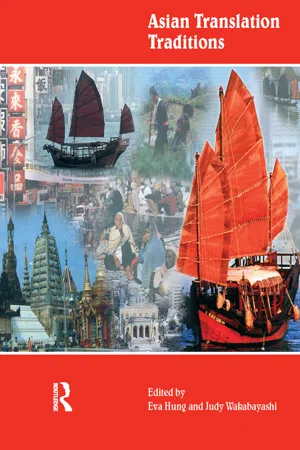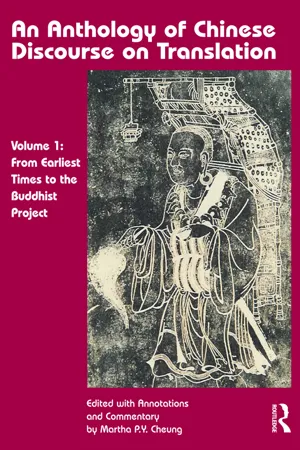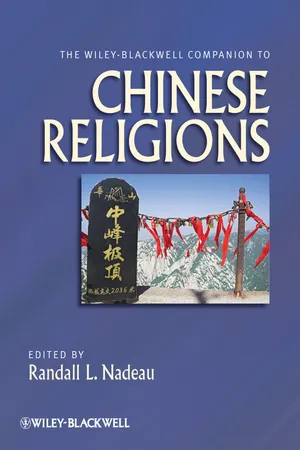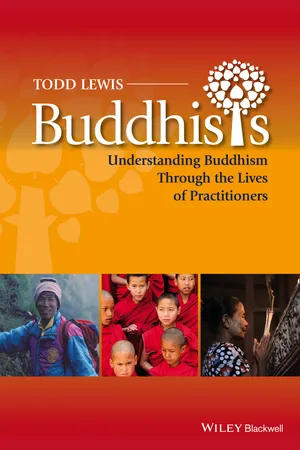History
Xuanzang
Xuanzang was a Chinese Buddhist monk, scholar, and traveler who lived during the Tang dynasty. He is best known for his extensive 17-year journey to India to study Buddhism and collect scriptures. Xuanzang's travels and writings greatly contributed to the transmission of Buddhist knowledge and scriptures to China, and his pilgrimage remains an important part of Chinese and Buddhist history.
Written by Perlego with AI-assistance
Related key terms
7 Key excerpts on "Xuanzang"
- The transfer of Buddhism from one culture to another, as facilitated by translators and travelers, turned out to be crucial for the preservation of Buddhist thought, which declined in India in the centuries after Xuanzang. Traditional Brahmins managed to reform their Hindu faith and win new converts, draining support from Buddhism. Then much of India was invaded and ruled by successions of Muslim rulers, including the ancestors of Sultan Firoz. They didn’t outlaw Buddhism or other local faiths and practices, but they didn’t support them, either. Xuanzang had complained about the many ruins of temples and monasteries across India; in the centuries following his visit, many more Buddhist monasteries and communities disappeared.While Buddhism diminished in India, it flourished in the East, not only in western China but throughout the Chinese Empire, all the way to the Korean peninsula and Japan, far from the sacred traces the Buddha had left. This long-distance impact was Xuanzang’s most important legacy.Xuanzang’s status grew in the centuries following his death, based on his travel writing and the massive translation work he accomplished upon his return. His fame received a further boost in the sixteenth century, when another genre of literature burst onto the scene: the prose novel. Journey to the West, attributed to the author Wu Cheng’en, enlivens Xuanzang’s journey with fantastical encounters and a group of amusing companions, including a monkey; it became an early success in the history of the novel and has remained the most popular classical novel in China, with countless adaptations ranging from theater to animation and film.As a traveler who became a mythic figure, Xuanzang is a reminder that the culture of China, whose Great Wall is sometimes taken as a sign that it tends to close itself off from the world, is in fact a major example of cultural importation. In honoring Xuanzang, China took a translator and traveler who went on a secret journey and turned him into a hero of cultural mobility.
- eBook - ePub
- Antonio S. Cua, Antonio S. Cua(Authors)
- 2013(Publication Date)
- Routledge(Publisher)
Xuanzang (Hsuan-tsang) Bruce W ILLIAMS Xuanzang (Hsüan-tsang, c. 602 or 603–664) was known for the record of his travels to India, as well as for numerous influential translations of Indian Buddhist texts. Xuanzang has not left us any explicit, detailed discussion of his philosophical position. Any attempt to reconstruct his philosophical outlook must proceed by culling information from three main areas. First are his Record of the Western Regions (Xiyu ji, T. 2057), completed in 646 C.E., and the three extant biographies written by his contemporaries: (1) Biography of the Dharma Master Xuanzang (Xuanzang fashi xing-zhuang, T. 2052) by Ming Xiang (dates unknown); (2) the biography of Xuanzang that occupies the bulk of fascicle (juan) 4 of Continuation of the Biographies of Eminent Monks (Xu Gaoseng zhuan, T. 2060) by Daoxuan (596–667); and (3) Biography of Tripitaka, the Dharma Master of the Great Ci’en Monastery under the Great Tang (Da Tang da Ci’en sanzang fashi zhuan, T. 2053) by Huili (615–c. 675) and Yancong (fl. 649–688), with a preface by Yancong dated to 688. Ming Xiang’s biography, although undated, predates the other two, since they both utilize it. The biography by Huili and Yancong has been traditionally regarded as Xuanzang’s standard biography. Second are the types of texts Xuanzang translated. Third, according to tradition, is his translation of Thirty Stanzas (Trimsika) by Vasubandhu (c. 420–500) and his editing of ten commentaries to these stanzas, all compiled under the title Discourse on the Accomplishment of Consciousness Only (Cheng weishi lun, T. 1585), or Vijnaptimatrata siddhi. Despite discrepancies among the three biographies, the dates of certain events in Xuanzang’s life can be ascertained reasonably well. Xuanzang, originally surnamed Chen, was the youngest of four children from an elite northern Chinese family; his grandfather, Chen Kang, served at the court of the Northern Qi dynasty (561–577) - eBook - ePub
- Eva Tsoi Hung Hung, Judy Wakabayashi(Authors)
- 2014(Publication Date)
- Routledge(Publisher)
Despite a tendency among the emperors to give preference to Taoism over Buddhism, sutra translation continued and forums were set up by imperial appointment. The two centres for sutra translation were Chang’an and Luoyang. 629 Chinese monk Xuanzang set out for India, travelling via Inner Central Asia. He studied in Nalanda Monastery in India for 5 years. 645–664 Xuanzang (?–664) returned to China in 645 and started translating in Chang’an. No. of translations: 75. c. 665 Compilation of Xu gaoseng zhuan [Further biographies of eminent monks] by Chinese monk Daoxuan. 671 Chinese monk Yijing (?–713) set off from Guangzhou for India by sea. He travelled in India for 25 years. He became head of translation forums in 700. No. of translations: 56. 660 Empress Wu became de facto ruler. She founded her own dynasty (Zhou) in 690. Buddhism gained favour over Taoism under her rule. The dynasty reverted to Tang in 705 . 693–713 Important sutras translated by Indian monk Bodhiruci (?–727) and Khotanese monk Siksananda (652–710). Their translation forums were notable in terms of the number of authoritative persons gathered. E.g. Siksananda presided over the translation of the Avatamsaka sutra with the assistance of Bodhiruci and Yijing, as well as Dharmatrata, a leading theologian, and Fuli, Polisher (runwen) par excellence. 716–741 Beginning of the translation of Tantric sutras by the Indian monks Subhakarasima (637?–735?) and Vajrabodhi (671?–741?). Tantric sutras represented later developments of In dian Buddhism and also the last phase of the Chinese sutra translation movement. 730 Chinese monk Zhisheng (?–740) compiled the Kaiyuan Shijiao lu [Buddhist catalogue of the Kaiyuan reign-period], one of the best records on sutra translation and translators. 746–774 Indian monk Asmoghavajra (705?–774, arrived in China as a child) translated Tantric sutras he brought back from India (journey 741–746). No. of translations: 110. He enjoyed unrivalled prestige in his lifetime. 789–796 A few monks from Khotan, Kucha and Kashmir translating in Chang’an. The most prestigious translator of this period was the Indian monk Pradjna. - eBook - ePub
An Anthology of Chinese Discourse on Translation (Volume 1)
From Earliest Times to the Buddhist Project
- Martha Pui Yiu Cheung, Lin Wusun(Authors)
- 2014(Publication Date)
- Routledge(Publisher)
Sutra of Perfect Enlightenment ) was attributed. It was, however, also widely believed that the sutra was composed in China. He came from Kashmir or Kabul during the Tang Dynasty.Buddhayaśas 覺明, or 覺名, or 佛陀耶舍, or 佛馱耶舍 (fl. fifth century CE), a Buddhist monk from north India, was a prolific translator of Buddhist texts into Chinese.Cai, Huang 蔡晃 (fl. 627–649 CE) was a Taoist who debated with Xuan Zang 玄奘 about the appropriateness of using Buddhist terms to explain Taoist concepts and vice versa. He was named in the Buddhist records as a scheming, meddlesome intruder on the Translation Assemblies of his days.Cang Jie 蒼頡 was a legendary figure said to have been inspired by the prints left by birds’ claws on sand to invent the Chinese script.Cao, Cao 曹操 (155–220 CE), founder of the Kingdom of Wei, was an able, sophisticated politician who rose from simple origins. He vied with the Kingdom of Wu and the Kingdom of Shu for the unification of China. With his two sons Cao Pei 曹丕 and Cao Ji 曹植, Cao Cao was one of the seminal figures of the author-centred tradition of poetry.Cao, Pei 曹丕 (187–226 CE), who reigned from 220 to 226 CE, was a highly original poet who used his position as prince and later Emperor of the Wei Dynasty to establish a liberal literary convention among aspiring poets and writers.Chen, Shou 陳壽 (233–297 CE), the historian who wrote San guo zhi 三國志 (The History of the Three Kingdoms ), had a lifelong interest in the genre of history writing. He was also the author of Gu guo zhi 古國志 (The History of Ancient States ).Cheng, Xuanying - eBook - ePub
- Benjamin Penny(Author)
- 2013(Publication Date)
- Routledge(Publisher)
:In the treatises the substance of the sutras (are claimed) to be of two kinds; the text and the meaning. The text is what is depended on; the meaning is the depender. Thus these two kinds are general names for all the sense-data that can be known…. The key to the two themes of the Hinayana and the Mahayana was something that previous (Chinese) savants could not decide upon, which caused the saints a shared doubt. They simply thought that the deficiency formed an obstacle to knowledge. And then Master Xuanzang returned from the West and brought Sanskrit texts to the east, and enriched the treasure grove of and opened up the erudite treasury of .42However, Zanning followed the form of Buddhist liezhuan (connected biographies/traditions) initiated by his predecessors Huijiao and Daoxuan. Moreover, as the Song Gaoseng zhuan was commissioned by the Song emperor and Zanning had a Confucian education (although it was used to overcome Confucianism),43 these problems were not addressed or did not impinge sufficiently on his awareness when he was writing the biographies.Likewise, in 904 when Ch’oe was writing his biography of Fazang (643–712), the Huayan champion of mind-only theory, this theory was not translated into the writing of the hagiography. Ch’oe realised that the biography he was composing was not structurally identical with those liezhuan or collective biographies written by the great historian Sima Qian who wrote biographies of the Confucian sages. To distinguish his subject, Fazang, from other saints, Ch’oe adopted the perfect number ten that appeared in Fazang’s Huayan sanmei guan on the meanings of the honest mind, as a metaphor for the stages in Fazang’s life.44 Despite this, Ch’oe’s hagiography of Fazang was fundamentally Confucian in outlook, in that Ch’oe adhered to the standard biographical techniques of Sima Qian and referred to the Confucian classics such as the Chunqiu — Spring and Autumn Annals — fortopoi.45 - Randall L. Nadeau, Randall L. Nadeau(Authors)
- 2012(Publication Date)
- Wiley-Blackwell(Publisher)
Shangqing lineage and had been a prominent student of Wang Yuanzhi (528–635), one of the Daoists most closely associated with the Tang’s securing of Daoist legitimacy—Wang had, for example, transmitted the registers of the Daoist priesthood in secret to the first Tang emperor. Between the years 676 and 683, Pan received imperial visits from both Gaozong and Wu Zetian at his abode on Mount Gaosong (in modern Henan), even at one point rejecting Gaozong’s request for talismans and sacred texts, a move that helped to secure his reputation for mystic authenticity and power. Ye Fashan was, famously, a favorite of five different emperors, stretching from Gaozong on through the early years of the reign of Xuanzong. The latter personally composed an inscription in his honor, praising his powers to spiritually transform the people and protect the realm. In later years, the Daoist Wu Yun (d. 778), who seems to have received only the lowest level of formal Daoist initiation (administered by a disciple of Pan Shizheng), nevertheless achieved a degree of popular status as an adept of the tradition, befriending the poet Li Bai (701–762)—himself deeply involved with Daoist practices—and composing Daoist works of various genres, including visionary poetry. In the mid eighth century, Wu Yun was invited to the imperial court, where he is said to have engaged the emperor in conversations about the religion. He was named a member of the prestigious Hanlin Academy, a perch that helped him in his desire to popularize Daoism among the literati as an alternative to Buddhism.Yet, even in a dynasty renowned for its Daoist connections, the Tang emperor with the greatest investment in Daoism was easily the great (but, in the end, fatally flawed) emperor Xuanzong. As Mark Edward Lewis notes, the emperor “placed paired statues of himself and Laozi in all state-sponsored Daoist temples, dedicated the Tang ancestral temples in [the dual capitals of] Chang’an and Luoyang to Daoist worship, and ordered the Daoist clergy at all state-sponsored institutions to perform rituals on the empire’s behalf” (Lewis 2009). In part as a way to honor the great Daoist master Sima Chengzhen (646–735), another in the line of imperially favored Daoists (and a descendent of the royal house of the former Jin Dynasty), in 721 Xuanzong had Laozi’s Classic of the Way and the Power inscribed in three different calligraphic styles as written by the master. These inscriptions formed a material and visual counterpart to the classics of Confucianism, which had received similar treatment. In 727, following the precedent of Gaozong in the previous century, Xuanzong made a move that remade the empire itself—and not just the imperial clan—as Daoist in essence: he reframed the five sacred peaks of the realm as Daoist holy sites, taking advantage of Sima Chengzhen’s declaration that the ancient gods of the mountains—long the focus of both imperial and local cult—were not the true highest gods of the ranges. Instead, the deities of the Daoist Shangqing hierarchies were proclaimed the proper objects of cult and all relevant rituals were changed accordingly. The empire itself was in this way reframed as a Daoist holy land (just as, at other times, it had been reconstrued as a Buddhist one).The rise in prestige of Laozi’s Daode jing continued in Xuanzong’s reign. Though the work was not originally a text of the Daoist religion at all (it was a pre-Daoist product of the spiritual and intellectual ferment of the Warring States period), as Timothy Barrett has pointed out, by the year 720 it had become the central Daoist text, at least in terms of the form of religion advocated by the court. Whereas before it had been simply one Daoist classic among others, it was in this year singled out for ritual enactment and study. In 730, lectures sponsored by the emperor were given on the text; in 732, the text was inscribed in stone again, this time with a new imperially authored commentary attached; in 733, it was decreed that every home should possess a copy of the text and new questions on its content were added to the imperial exams; finally, in 745, the text was proclaimed the number one classic of all Chinese civilization. Beyond the Daode jing- eBook - ePub
Buddhists
Understanding Buddhism Through the Lives of Practitioners
- Todd Lewis, Todd Lewis(Authors)
- 2014(Publication Date)
- Wiley-Blackwell(Publisher)
This chapter looks at the life of a twentieth-century pilgrim-translator, the Chinese monk Fazun, whose life stands as a case study for the visceral, difficult, and still ongoing process of transmitting Buddhism. It provides a reminder of the primary way that Buddhism was transmitted across Asia over the past two millennia: by small groups of monks who traveled alone or together with caravans of merchants or soldiers, traversing passes through the towering Himalayas and the mountain ranges of central Asia, or enduring long, frightful sea voyages to reach their destinations. The character of Buddhism as the world's first missionary religion (beginning with the Buddha's first converts) did not end back then. In the case of thousands of others in subsequent millennia such as Fazun, after immersing themselves in their studies, the lucky ones returned home or ventured out; infused with the fervor to spread the dharma, and with a spirit of personal adventure, they carried scriptures on their backs and new understandings in their minds to serve their tradition. To complete their transmission of the dharma, most also had another challenge to surmount: the formidable difficulty of crossing linguistic boundaries to compose translations to complete their task.Wu Tai Shan, the Buddhist sacred mountain region in Shanxi Province, northwest of Beijing, is part of Fazun's biography. It became an important center of international Buddhist pilgrimage as far back as the Tang dynasty (618–906), from which records survive indicating that pilgrims as far as India traveled all the way there for the promise of having visions of the celestial bodhisattva Manjushri. From the Mongolian Yuan dynasty onward (1271–1368), this valley center surrounded by the Wutai Shan peaks became a center where numerous Tibetan lineages established monasteries. Chinese monks such as Fazun could find refuge there for spiritual practice and access to Tibetan masters who passed on their distinctive Buddhist traditions.Fazun ultimately became the most prolific translator of Tibetan Buddhist literature into Chinese. In the 1920s and 1930s, he twice traveled to Tibet and studied for about a decade under some of the most renowned Tibetan Gelug masters of his day. Crossing forbidding, dangerous terrain and enduring limited food and medical care, Fazun wore away his own skin, shed many tears, and lost blood, driven by an insuppressible zest to give his life fully to his missionary cause. The fruit of his toils is a massive body of literature, much of which still serves today as the textual bedrock for the scholastic study and ritual practice of Tibetan Buddhism in China and Taiwan. His life and travels give us a glimpse into the concerns of Chinese Buddhists in the early twentieth century and the spread of lineages of Tibetan Buddhism across China. As seen in the biography of Auntie Li (Chapter 3), Chinese interest endures in Tibetan lineages of Mahayana-Vajrayana Buddhism. Chinese teachers in these lineages continue to spread in modern China up to the present day, complicating the relationship between China and traditional Tibet in our historical imagination.
Index pages curate the most relevant extracts from our library of academic textbooks. They’ve been created using an in-house natural language model (NLM), each adding context and meaning to key research topics.

